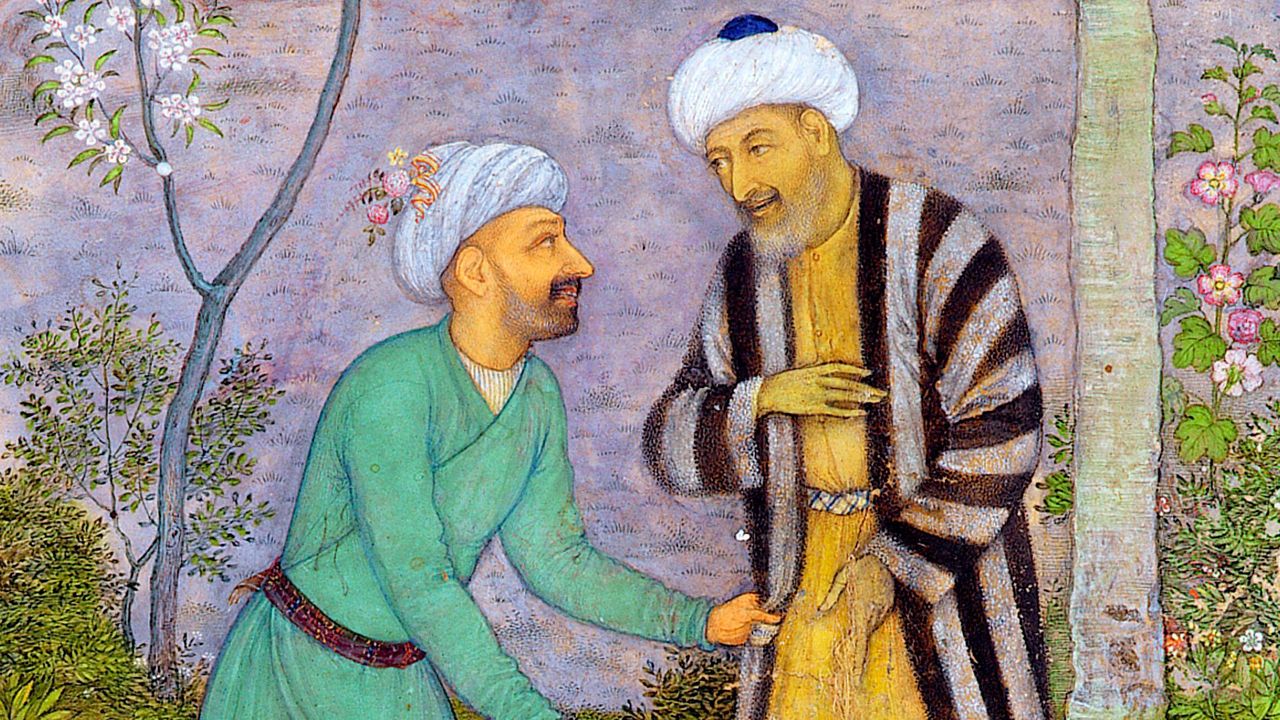From the earliest mystical whispers in the simple quatrains of 9th‑century ascetics to the luminous verses of Rūmī and Hāfez, Sufism has been the beating heart of Persian letters. More than a spiritual discipline, Sufism offered a rich symbolic vocabulary, narrative frameworks, and ethical ideals that Persian writers wove into their poetry and prose—creating a literary tradition in which the soul’s journey to the Divine became the paramount tale.
1. Early Roots: Sufi Thought Enters Persian Prose
-
Proto‑Sufi Ascetics: By the 9th and 10th centuries, figures like Abū Ḥāamid al‑Ghazzālī (though writing in Arabic) influenced Persian intelligentsia with ideas of inner purification and the primacy of heartfelt faith over mere ritual.
-
Hagiographical Works: Early Persian prose—tales of saints (tadhkirahs) and miracle‑stories—introduced readers to models of renunciation, spiritual trials, and the possibility of direct union with God. These biographies laid the groundwork for narrative devices later refined by poets and romancers.
2. The Golden Age: Sufi Poets and the Metaphoric Revolution
A. Farīd ud‑Dīn ʿAṭṭār (d. 1221)
-
Conference of the Birds: By casting seekers as literal birds on a pilgrimage, Attar popularized allegory—seven valleys for seven spiritual stations—teaching that the Divine is found not in the heavens above but within one’s own heart.
B. Jalāl al‑Dīn Rūmī (1207–1273)
-
Masnavi: Often called the “Persian Quran,” this six‑volume epic uses parable after parable—moths and flames, reed‑flutes lamenting, and tavern scenes—to make complex Sufi concepts accessible to both learned disciples and lay listeners.
C. Ḥāfez of Shiraz (c. 1315–1390)
-
Ghazal Mastery: Hāfez perfected the ghazal, infusing every word—wine, tavern, beloved—with multiple layers: the earthly, the moral, and the mystical. His poems remain perennial guides to the dance between human desire and Divine union.
3. Narrative and Didactic Prose: Beyond Poetry
-
Jāmī’s “Seven Portraits” (Haft Aṣl): In the 15th century, ʿAbd al‑Raḥmān Jāmī combined storytelling with Sufi doctrine, illustrating each spiritual station through anecdotes that taught ethics, cosmology, and metaphysics.
-
Didactic Treatises: Manuals on dhikr (remembrance), meditation, and the etiquette of the spiritual path circulated widely, often illustrated with short poetic snippets—further blurring the lines between mystical practice and literary art.
4. Sufi Imagery as Literary Currency
-
Wine and Tavern: From Rūmī to modern poets, the “wine of love” signifies Divine intoxication; the tavern is the heart’s sanctuary, not a worldly drinking‑hall.
-
Beloved and Lover: The human beloved’s beauty is the veil through which seekers glimpse God’s perfection—fueling centuries of romantic imagery in secular love‑poems.
-
Journey and Quest: Whether in epic romances like Nizami’s Haft Paykar or in everyday ghazals, the motif of pilgrimage and seven‑stage ascent became shorthand for internal transformation.
5. Ethical and Social Resonance
-
Compassion and Justice: Sufi emphasis on mercy and service inspired Persian storytellers to exalt generosity—seen in Saadi’s Golestan and Bustan—casting benevolence as both social glue and a path to spiritual merit.
-
Tolerance and Pluralism: The Sufi ideal of the Unity of Being (Wahdat al‑Wujūd) fostered a literary culture that embraced different religious and philosophical voices, reflected in Persian works that quote Qur’anic, Zoroastrian, and even Hindu ideas.
6. Legacy and Modern Reverberations
-
Contemporary Poetry and Music: Modern Iranian poets and songwriters still draw on Sufi tropes—nightingale and rose, moth and flame—to articulate longing in an age of upheaval.
-
Global Translations and Adaptations: Rūmī’s and Hāfez’s works have become international bestsellers, testimony to the universal power of Sufi‑infused Persian verse to speak of love, loss, and transcendence.
Conclusion
Across more than a millennium, Sufism granted Persian literature its most enduring motifs and its deepest ethical core. By transforming personal yearning into cosmic allegory, Persian writers created a literary mirror in which each reader could see both their own reflection and the face of the Divine. In the grand tapestry of world letters, Persian Sufi poetry and prose stand as luminous tributaries flowing toward the same ocean of mystical insight—inviting every soul, bird‑like, to embark on the journey home.





